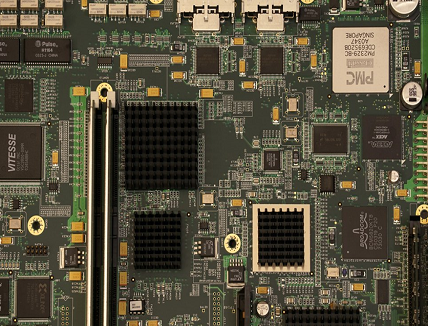
Electronics can be a fun and rewarding hobby. Some people like to start with individual parts and components, while others may choose to buy an electronics kit with clear and easy assembly instructions. Electronics kits today go far beyond a few LEDs, capacitors, and a breadboard. Modern electronics kits are essentially tiny computers with unlimited possibilities. The great thing about Electronics Kits is the opportunity to learn and gain a better understanding of electronics and circuits while creating something amazing.
But I think it’s safe to say that most electronics hobbyists don’t realize there are rules and laws that can apply to projects if they use radios and transmitters. Many of the electronics we build rely on the electromagnetic spectrum. Things like radios, transmitters, and receivers all fall into this spectrum. Some of these devices use radio or RF (radio frequency) signals, but there are also what’s known as unintentional radiators.

Unintentional radiators
Unintentional radiators are, “a device that intentionally generates radio frequency energy for use within the device, or that sends radio frequency signals by conduction to associated equipment via connecting wiring, but which is not intended to emit RF energy by radiation or induction.” This definition from Cornell law school is a bit abstract, but an example of an unintentional radiator is a computer. Other examples of unintentional radiators are electric motors, transformers, dimmers, and electrical power lines.
The radiated emissions from these objects can create radio interference on radio receivers. If the interference is noticed or if someone complains, the FCC (Federal Communications Commission) may get involved. When it comes to electronics, the FCC is responsible for safeguarding the radio spectrum in the US. Our radio spectrum includes everything from cellular networks, WiFi, emergency services radio, and even baby monitors. When a device has the ability to potentially interact or disrupt these radio signals or communications, the FCC could get involved. While it’s rare that the FCC issues fines to electronics hobbyists, it has happened.
Building projects
As a hobbyist, you’re allowed to build up to five devices for personal use as long as there is no interference within the protected electromagnetic spectrum. And it’s important to note, that even though your device may not have a radio transmitter, it may still have components that can interfere within this designated range of the electromagnetic spectrum.
Electronics kits, including robot kits, usually include a schematic diagram, a printed circuit board, instructions, and components. These kits also fall under the rules that govern transmitters and devices that operate within the electromagnetic spectrum. Another issue with kits is they are not allowed to be sold within the US if they result in a completed product once they are assembled. The reason for this is to prevent manufacturers from circumventing the law.
Subassemblies
There are also kits that simply form a subassembly which are parts of a completed project and require additional components in order to make a complete device. These subassemblies may include an Arduino processor and components like sensors and LEDs that make up a part of a larger project. These subassemblies are not regulated in the same way as complete electronic kits.
It is the responsibility of the manufacturer to provide information about rules and regulations regarding their products, so be sure to read, follow, and understand any guidelines. Some devices will come with an FCC ID which notifies you that the device radiates an RF signal. If you know the device has the potential to interfere with communications, be sure to use common sense when building your project to avoid problems or legal issues.

Know the rules before you tinker!
Arduino devices are FCC compliant and the projects they create are usually safe from radio interference. The modern rules for electronics kits are generally geared towards safety. It’s critical to protect our radio and communications systems and it’s our responsibility to understand what the devices we create can do to the waves around us.
If you’re a hobbyist and plan to build something with an electronics kit, take the time to plan and consider what the device can do outside of what it was intended for. Modern electronics kits are powerful and have capabilities that can lead to technological innovation and discovery. But remember that innovation comes with responsibility and rules. Keep building new and amazing things, but consider any adverse side effects.


















